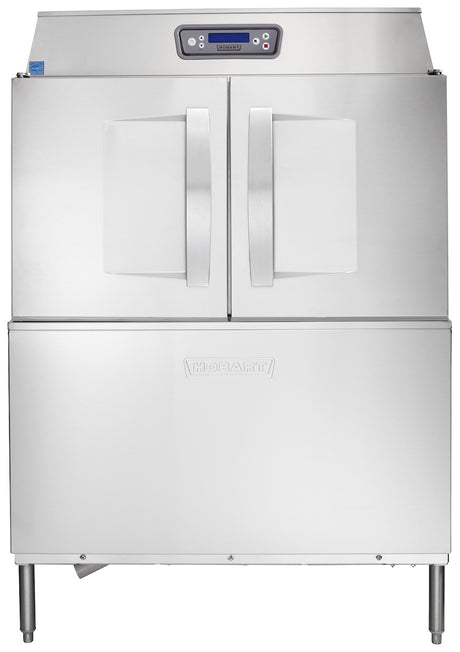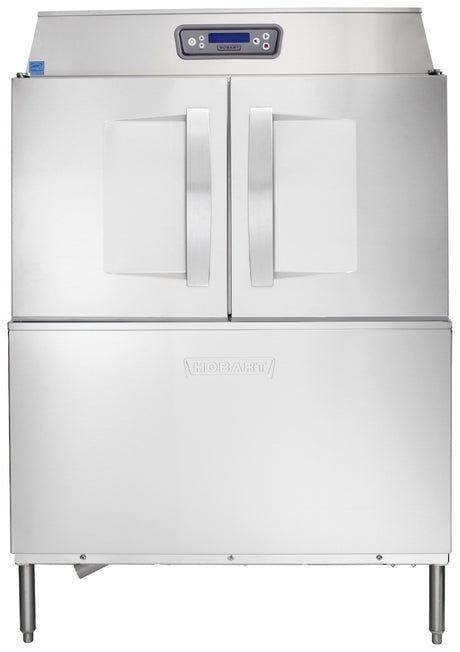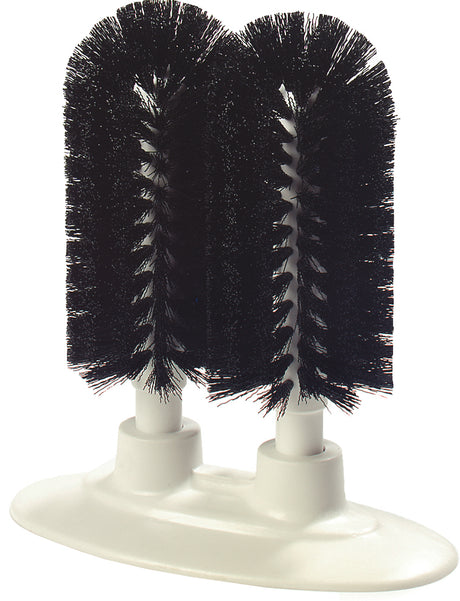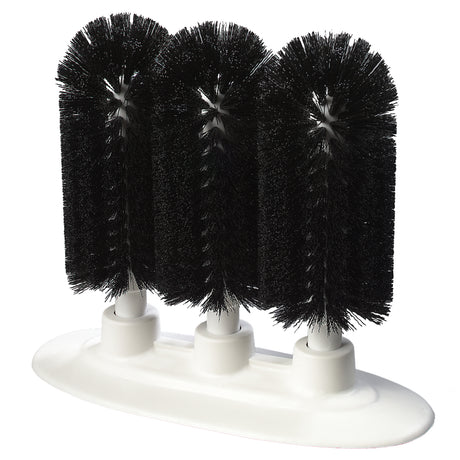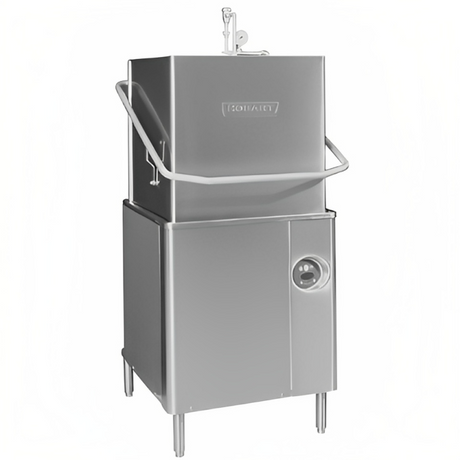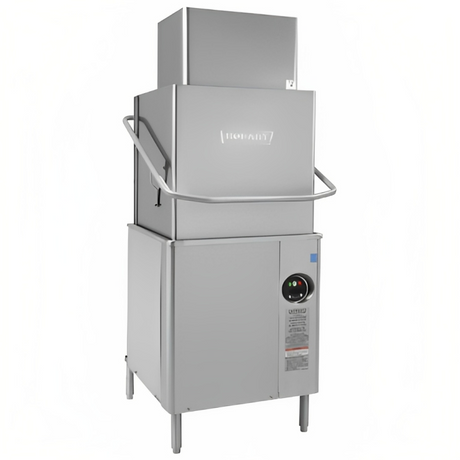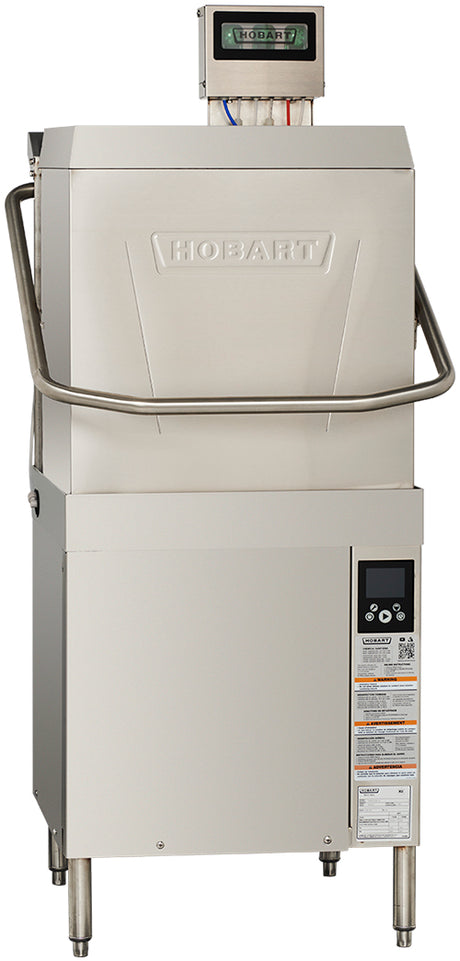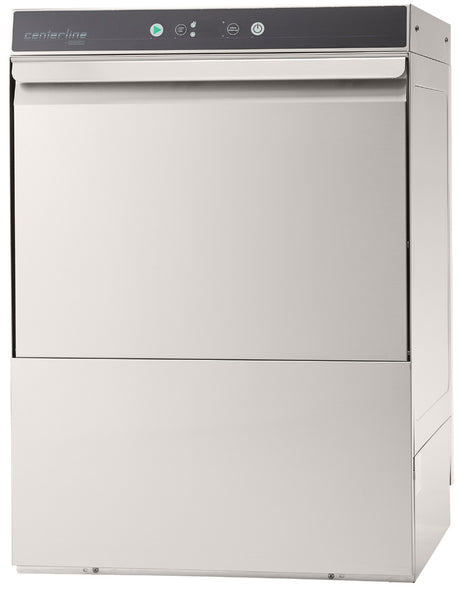Need Help Designing Your Kitchen Layout? Email us: bids@jeansrs.com
Dish Room Design
What the Dish Room Is
The dish room (or warewashing area) is the section of a commercial kitchen where all dirty dishes, pots, pans, utensils, and trays are cleaned and sanitized.
It’s one of the most important areas for food safety and health code compliance.
Main equipment in this area:
- Three-compartment sink
- Hand sink
- Dishwasher (conveyor or undercounter)
- Pre-rinse faucet / sprayer
- Drainboards / dishtables
- Scrap sink / soiled dish table
- Clean dish table
- Floor trough / floor drain
The Three-Compartment Sink
Used when washing manually (no dishwasher or for pots and pans that don’t fit in one).
Purpose of each compartment:
- Wash: Hot water + detergent
- Rinse: Clean water
- Sanitize: Chemical (usually chlorine or quaternary ammonia) or hot water to kill bacteria
Accessories for a 3-comp sink:
- Faucets (swing spout or gooseneck)
- Pre-rinse sprayer (for rinsing food off before washing)
- Drainboards (for dirty dishes and drying clean ones)
- Lever or pedal-operated valves (to reduce hand contact)
- Sink legs with adjustable feet (levelers)
- Basket strainers (in drains)
- Overflow tubes (to control water level)
Browse Three Compartment Sinks
Why Stainless Steel 304 (vs. 430)
Commercial sinks are almost always made from stainless steel, but there are different grades:
|
Grade |
Chromium/Nickel |
Corrosion Resistance |
Typical Use |
|
304 |
18% Cr, 8% Ni |
Excellent |
Food contact surfaces, kitchens, dish rooms |
|
430 |
17% Cr, 0% Ni |
Good (not great) |
Work tables, equipment bases, low-moisture areas |
Why 304 for sinks:
- High resistance to corrosion and rust, even with constant water and sanitizers.
- Smooth, easy to clean, and won’t absorb odors or bacteria.
- Required by NSF for food-contact surfaces in many cases.
NSF Certification
NSF International (National Sanitation Foundation) certifies that equipment meets public health and safety standards for foodservice.
Why NSF matters:
- Ensures equipment is sanitary and easy to clean (no cracks, sharp edges, or trapped food).
- Required by health inspectors, especially in:
- Schools
- Hospitals
- Nursing homes
- Restaurants
- Non-NSF equipment may fail inspection and cannot be legally used in those facilities.
As a salesman:
Always point out “NSF-listed” when selling to any institutional or public facility.
Hand Wash Sink
Separate from the 3-comp sink — used only for handwashing.
Every kitchen or dish room must have one nearby.
Requirements:
- Dedicated faucet with hot & cold water
- Soap dispenser
- Paper towel dispenser or hand dryer
- Splash guards if close to prep or dish areas
- Foot, knee, or sensor operated faucets preferred (for hygiene)
- NSF stainless steel bowl
Pre-Rinse Faucet / Hose
Used at the soiled dish table to rinse food debris off plates before washing.
Features:
- High-pressure spray nozzle on a flexible hose
- Spring-return arm
- Usually mounted on a wall or splash-mounted faucet base
- Helps save water and keeps the wash water cleaner longer
- Big selling points: Durability, water-saving design, brand reputation (like T&S Brass, Fisher, or Krowne)
Dishwashers (like CL44)
CL44 usually refers to a Hobart Conveyor Dishwasher model (CL = Conveyor Line, 44" chamber).
Why important:
- Automates washing for high-volume kitchens
- Uses high-temp sanitizing (180°F rinse) or low-temp with chemicals
- Provides consistent sanitation
- Saves labor and ensures compliance with health department codes
Types of dishwashers:
- Undercounter: small restaurants, bars
- Door type / hood type: medium kitchens
- Conveyor type (CL44): schools, hospitals, big restaurants
- Flight type: very large facilities (airports, hospitals)
Accessories:
- Clean/soiled dish tables
- Scrap sink
- Dishtables with rollers
- Racks (flatware, glass, peg racks)
- Booster heater (for high-temp models)
Levelers, Legs, and Installation
- Sinks and tables must be leveled for drainage and to prevent pooling water.
- Adjustable bullet feet help compensate for uneven floors.
- In schools/hospitals, usually require sealed floor mounts or coved base for sanitation.
Flow of a Proper Dish Room
Here’s the sanitary flow (important to explain to customers):
- Soiled dish drop-off area (with scrap sink or disposer)
- Pre-rinse station
- Dishwasher or 3-comp sink
- Clean dish drainboard
- Storage or drying rack
Flow must go one direction — dirty to clean — to prevent contamination.
Special Notes for Schools, Hospitals, Nursing Homes
- Must meet NSF, UL, and local health code standards.
- Require 304 stainless, sealed joints, and hand sinks in every zone.
- Temperature and sanitizer logs often checked by inspectors.
- Noise, energy efficiency, and water savings are big selling points.


